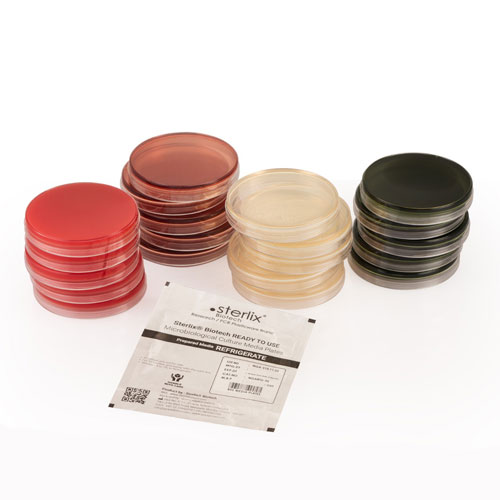Product Details
Fluid Thioglycollate Medium (FTM) is a liquid culture medium used in microbiology for the cultivation and examination of microorganisms. It is a versatile medium that supports the growth of a wide range of microorganisms, including both aerobic and anaerobic bacteria, as well as facultative anaerobes.
The composition of Fluid Thioglycollate Medium typically includes:
Thioglycollate: Thioglycollate acts as a reducing agent, helping to remove oxygen from the medium. It creates an anaerobic environment for the growth of anaerobic microorganisms.
Peptone: Peptone is a mixture of enzymatically digested proteins. It serves as a source of nutrients, including amino acids and other growth factors, necessary for bacterial growth.
Sodium Thioglycollate: Sodium thioglycollate is a reducing agent that helps in removing dissolved oxygen from the medium.
Dextrose: Dextrose: also known as glucose, serves as an additional carbon and energy source for bacterial growth.
Sodium Chloride: Sodium chloride is added to maintain the osmotic balance of the medium.
The FTM is prepared by sterilizing the medium, typically through autoclaving, and then inoculating it with the desired microorganism. The medium is usually dispensed into tubes or bottles, and the containers can be closed with a screw cap or left open to allow for different oxygen conditions. The tubes or bottles are then incubated at the appropriate temperature and duration based on the growth requirements of the microorganism being studied.
Fluid Thioglycollate Medium is commonly used for various purposes, including:
Anaerobic Cultivation: FTM provides a suitable environment for the growth of obligate anaerobic bacteria, which require oxygen-free conditions.
Microbial Quality Control: FTM is used for testing the microbial content of pharmaceutical products, including determining the presence of aerobic and anaerobic microorganisms.
Environmental Monitoring: FTM is employed to assess the microbial content of air, water, and surfaces in controlled environments, such as cleanrooms or production facilities.
Sterility Testing: FTM is utilized for sterility testing to determine the presence of viable microorganisms in pharmaceutical, cosmetic, and medical device products.
The medium's ability to support both aerobic and anaerobic growth makes it particularly useful in studying the oxygen requirements and growth characteristics of microorganisms. The oxygen concentration in FTM decreases with depth due to the reducing agents present, creating a gradient from aerobic to anaerobic conditions. This allows the observation of various oxygen-dependent growth patterns.
The composition of Fluid Thioglycollate Medium typically includes:
Thioglycollate: Thioglycollate acts as a reducing agent, helping to remove oxygen from the medium. It creates an anaerobic environment for the growth of anaerobic microorganisms.
Peptone: Peptone is a mixture of enzymatically digested proteins. It serves as a source of nutrients, including amino acids and other growth factors, necessary for bacterial growth.
Sodium Thioglycollate: Sodium thioglycollate is a reducing agent that helps in removing dissolved oxygen from the medium.
Dextrose: Dextrose: also known as glucose, serves as an additional carbon and energy source for bacterial growth.
Sodium Chloride: Sodium chloride is added to maintain the osmotic balance of the medium.
The FTM is prepared by sterilizing the medium, typically through autoclaving, and then inoculating it with the desired microorganism. The medium is usually dispensed into tubes or bottles, and the containers can be closed with a screw cap or left open to allow for different oxygen conditions. The tubes or bottles are then incubated at the appropriate temperature and duration based on the growth requirements of the microorganism being studied.
Fluid Thioglycollate Medium is commonly used for various purposes, including:
Anaerobic Cultivation: FTM provides a suitable environment for the growth of obligate anaerobic bacteria, which require oxygen-free conditions.
Microbial Quality Control: FTM is used for testing the microbial content of pharmaceutical products, including determining the presence of aerobic and anaerobic microorganisms.
Environmental Monitoring: FTM is employed to assess the microbial content of air, water, and surfaces in controlled environments, such as cleanrooms or production facilities.
Sterility Testing: FTM is utilized for sterility testing to determine the presence of viable microorganisms in pharmaceutical, cosmetic, and medical device products.
The medium's ability to support both aerobic and anaerobic growth makes it particularly useful in studying the oxygen requirements and growth characteristics of microorganisms. The oxygen concentration in FTM decreases with depth due to the reducing agents present, creating a gradient from aerobic to anaerobic conditions. This allows the observation of various oxygen-dependent growth patterns.


